As a responsible citizen, you must have a plan in an emergency. This includes having a healthy emergency kit with supplies to help you get through any situation. It can be incredibly reassuring to have a prepared emergency kit that you can resort to in an emergency. But what should be in this kit? As a homeowner or business owner, it’s important to have an emergency kit.
A kit ready to use in case of a natural or artificial disaster. Whether you’re worried about a possible tornado or an earthquake. Having the right supplies will help you get through the tough times. In this post, we’ll look at some of the staples you should include in your emergency kit. From food to medical supplies, we’ll cover it all.
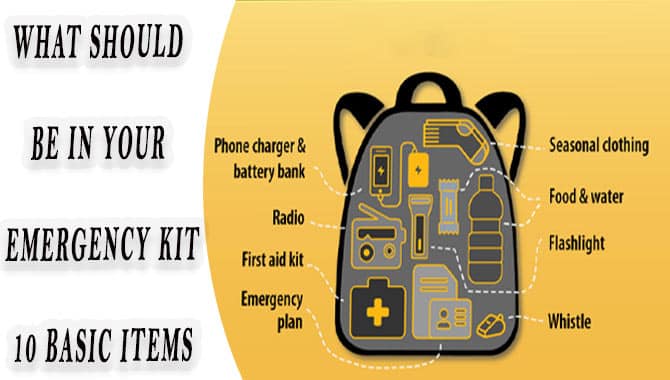
What Is An Emergency Kit?
An emergency kit is a collection of supplies and items you can use in an emergency. It should include flashlights, food, water, first-aid supplies, and tools for communicating and evacuating. The reason why having an emergency kit is important is because it allows you to survive for as long as possible in difficult circumstances.
If there’s ever a natural disaster or another kind of crisis, having everything you need ready will make life much easier. Plus, if something does happen and you need to evacuate your home quickly, having everything with you will give you the edge over those who don’t have an emergency kit.
It’s important to have preparations for emergencies, both big and small. That’s why it’s important to have an emergency kit with enough supplies to last for at least three days. The kit should include a flashlight, first-aid items, and tools like a knife or hammer.
Make sure to keep your emergency kit out of sight, so you won’t have to worry about it taking up space or getting damaged in an emergency. Familiarize yourself with the contents of your emergency kit, so you know what to grab if disaster strikes. Finally, remember that having a plan and knowing your priorities can go a long way in helping you avoid emergencies altogether.
10 Items You Need To Pack In Your Emergency Kit

Before any natural disaster, earthquake, or other emergency strikes, prepare with an emergency kit. This kit should include food and water preservation supplies, first-aid supplies, and important documents such as evacuation routes. In addition, it’s important to remember to pack a flashlight, whistle, hatchet, and phone charger.
These items can come in handy in case of an emergency and will help you get through tough situations. Remember adding instructions on how to use the kit in emergencies so that you and your loved ones have preparations for anything.
1.Flashlight
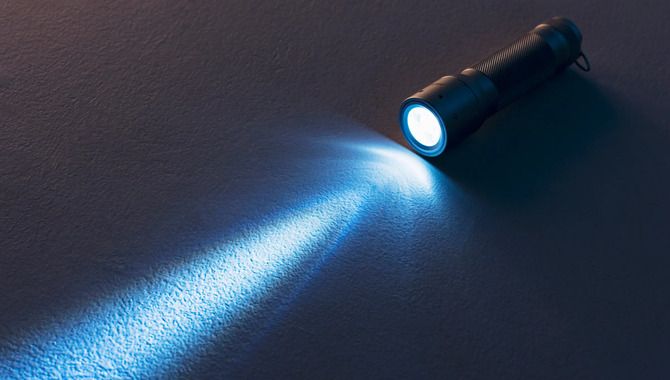
A flashlight is a great emergency item to have on hand. You can use it to find your way in the dark or to signal for help. You should also keep one at home, work, and car. Make sure it has a fresh battery and is easy to carry around. A flashlight is essential for anyone who wants to stay safe and productive in a disaster situation.
You can use flashlights for various purposes, including finding your way in the dark, signaling for help, or illuminating things you need to see. You should always have a quality flashlight with you when you’re outdoors – even if you don’t think there’s going to be any trouble. If the power goes out, your flashlight will provide enough light to see where you are going and find things you may have lost track of.
2.Matches Or Lighter
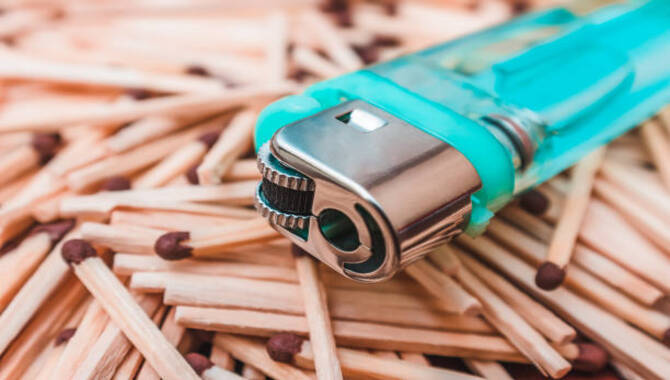
Matches or a lighter are both essential items for an emergency kit. Both have advantages and disadvantages, so it’s important to choose the one best suited to your needs. Matches are the traditional choice for emergency kits because they work even in low-light conditions. They’re easy to store and carry, and You can use them to start fires in difficult situations.
On the other hand, lighters are better suited for large groups or areas with plenty of light. They’re also easier to use than matches since you don’t need to strike them on an object like a rock. Lighters can also be used as flares when needed.
3.Whistle
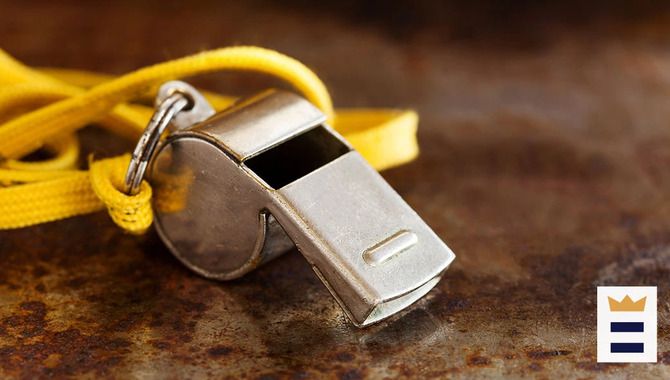
Be prepared for an emergency by including a whistle in your kit whenever you’re out and about. This small but important equipment can save your life in a pinch. In addition to first-aid supplies, pack a light source and map of the area so you know where to find help if needed. Store everything safely so you can grab it quickly on-site. And remember the food and water – they’ll help sustain you during an emergency.
4.Basic First Aid Kit
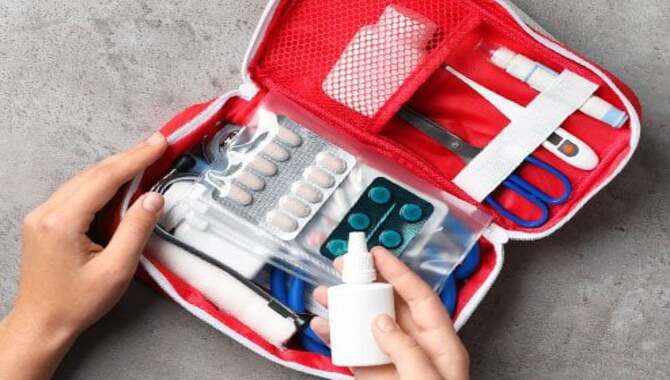
In an emergency, it is important to stay safe and prepared. A basic first aid kit can help you in case of anything that comes up – minor injuries or something more serious like a natural disaster or evacuation.
You should include a flashlight, binoculars, whistle, and phone charger in your kit. If there is an emergency evacuation, make sure to have food supplies (such as energy bars) and water with you, too, so you don’t get stranded. Finally, add an emergency blanket and sturdy chair for extra comfort.
5.Extra Clothing For Cold Weather

Preparing for colder weather doesn’t have to involve a lot of extra hassle – all you need are the right supplies. In cold weather, it’s important to have preparations for anything. That means having enough clothing to cover you when the temperature drops below freezing. Here are some of the essentials that you should include in your emergency kit:
- A coat or jacket
- Heavy coats or jackets for winter weather
- Skiing boots or snowshoes
- Mittens or gloves
- Raincoat or poncho
- A hatchet, a shovel, and a set of screwdrivers
6.Sunscreen
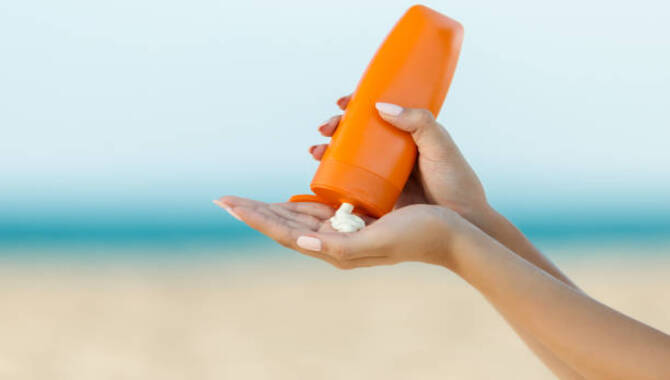
Sunscreen is essential when outdoors – not just during the summer months! Carry a first-aid kit that includes sunscreen, adhesive bandages, and antibiotic ointment in an emergency. Make sure to have enough food and water for yourself, too, as you may need help accessing supplies easily if you get lost or stranded. And remember your phone charger.
7.Cash

Keeping a few hundred dollars in cash is always a good idea, as you never know when something might come up. It’s also important to pack food and water, a flashlight and whistle if needed, and include a first-aid kit in case of any emergencies. If you can’t afford to pay your parking tickets or coffee bill immediately, having some extra money available will help tide you over until payday.
8.Cell Phone Charger
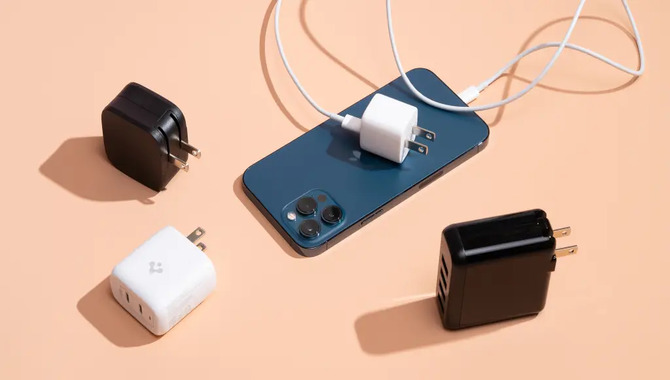
Every person should have a cell phone charger in their possession, as well as appropriate emergency kit items like water, snacks, hats, and sunscreen. An extra advantage of having such a kit is that you won’t need to search for your cell phone if it becomes lost or stolen – all you’ll need is the charger!
Keep important documents like insurance cards and Identification documents close by. Keep things simple by packing everything into one small bag you can easily grab when necessary. And lastly, never hesitate to contact family and friends in an emergency.
9.Knife

Knives are essential for everyday life – from emergencies to basic tasks. Make sure you always have one on you, and it’s a sturdy knife that can handle tough cuts and injuries. Include a first-aid kit in your survival supplies so that you have preparations in case of accidents or wounds.
A flashlight is also important because it can be difficult to see what’s around you during power outages or when exploring dark spaces. Lastly, include items like water, food, and shelter in your kit, as these will help you survive any weather conditions.
10.Prescription Meds
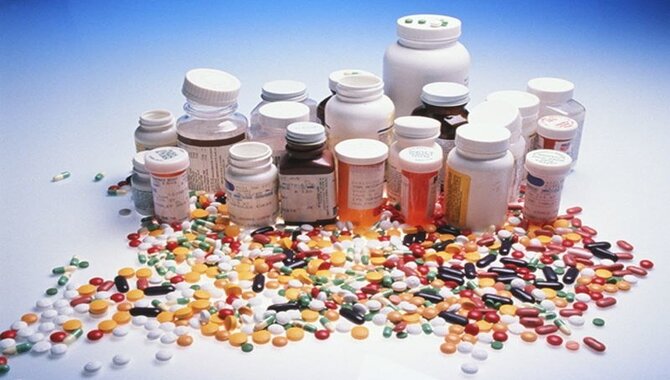
As we all know, prescription medications can be costly. Make sure you have enough of them on hand so that you and your family can take the required medication without difficulty. You should also pack an emergency first-aid kit in case of medication trouble. Please keep a copy of all your important medical documents handy to avoid fumbling with them during an emergency.
Additional Tips For Packing An Emergency Kit
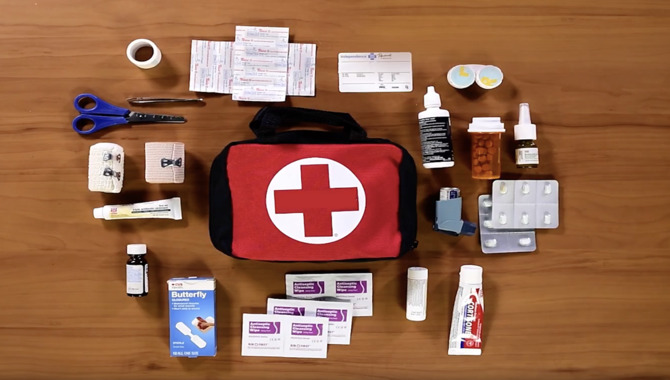
An emergency kit is essential for anyone who lives in a populated area. It should include supplies for sheltering in an evacuation situation, such as a tent and sleeping bag. Additionally, include supplies for emergency situations like fires, floods, and earthquakes. Include tools like a flashlight, flares, and a first-aid kit.
Make sure also to include food and water, as well as medications and important identification documents. Lastly, be sure to include a list of important phone numbers and addresses in case of an emergency. Having a prepared emergency kit can help in the event of any unforeseen situation. Here are a few additional tips for packing an emergency kit:
- Include items that can help you survive in any weather condition, including clothing and gear for cold weather, heat exhaustion, and extreme rain or sun exposure.
- Include something to cook with if you have to stay stranded away from civilization for an extended period of time.
- Make sure you have enough food and water to sustain yourself for at least three days, as well as medical supplies if necessary.
- Include a first-aid kit that is fully stocked with items like bandages, antiseptics, and painkillers.
- Include a map or guide of the area you’re going to be living in so that you can find your way back if necessary.
Conclusion
No one knows when an emergency will strike, but having the right supplies on hand can make all the difference. Make sure to pack a kit that includes items like first-aid supplies, water, food, and shelter, to name a few. While these items are not all necessary for every emergency, having them in your kit can make a huge difference in your ability to survive and get back on your feet.
You may have realized that we did not ask you to pack a huge list of things in your emergency kit. Instead, we asked you to focus on basic but essential items that could help save your life during an emergency. Be sure to check out our website for more helpful tips on how to prepare for emergencies and what should be in your emergency kit.
Frequently Asked Questions
1.What Should Be In Your Emergency Kit?
Ans: There are a variety of things you can include in your emergency kit, depending on the situation. It should include supplies for sheltering in an evacuation situation, such as a tent and sleeping bag, tools like a flashlight and flares, food and water, medications, and important identification documents. Additionally, make sure to include a list of important phone numbers and addresses in case of an emergency.
2.How Much Does A Basic Emergency Kit Cost, And What Is Included In It?
Ans: There is no one-size-fits-all answer to this question, as the cost of a basic emergency kit will vary depending on the specific needs of the individual. However, some general items that may be included are a first aid kit, flashlight, batteries, water, nonperishable food items, whistle, multi-tool, blankets, dust mask, and hand sanitizer.
3.Where Can You Buy An Emergency Kit?
Ans: One of the best places to buy an emergency kit is a store that sells camping and outdoor supplies. Kits vary in size, content, and cost depending on the type of emergency you may encounter, so it’s important to read the descriptions carefully and choose the one that is best suited for your needs.
It is also important to check expiration dates on items such as food and water, as well as replace any used items in your emergency kit over time.
4.How Can I Prepare For The Worst-Case Scenario?
Ans: One important thing you can do to be prepared for the worst-case scenario is to have an emergency plan in place for your loved ones. This could involve having a list of emergency phone numbers and addresses handy, as well as provisions for your family in the event of an evacuation or lengthy power outage.
It’s also important to be prepared for natural disasters such as hurricanes, earthquakes, and tornadoes. Have a first aid kit with basic supplies like bandages, antiseptic wipes, and pain relief medications in case of injuries.
5.Should I Get A Pre-Made Emergency Kit, Or Should I Make My Own?
Ans: Ultimately, the decision whether or not to make your own emergency kit will depend on your specific needs and budget. Some good tips for preparing a homemade emergency kit include gathering supplies like water filters, snacks and drinks, extra batteries, first aid kits, and blankets in different sizes.

Leave a Reply